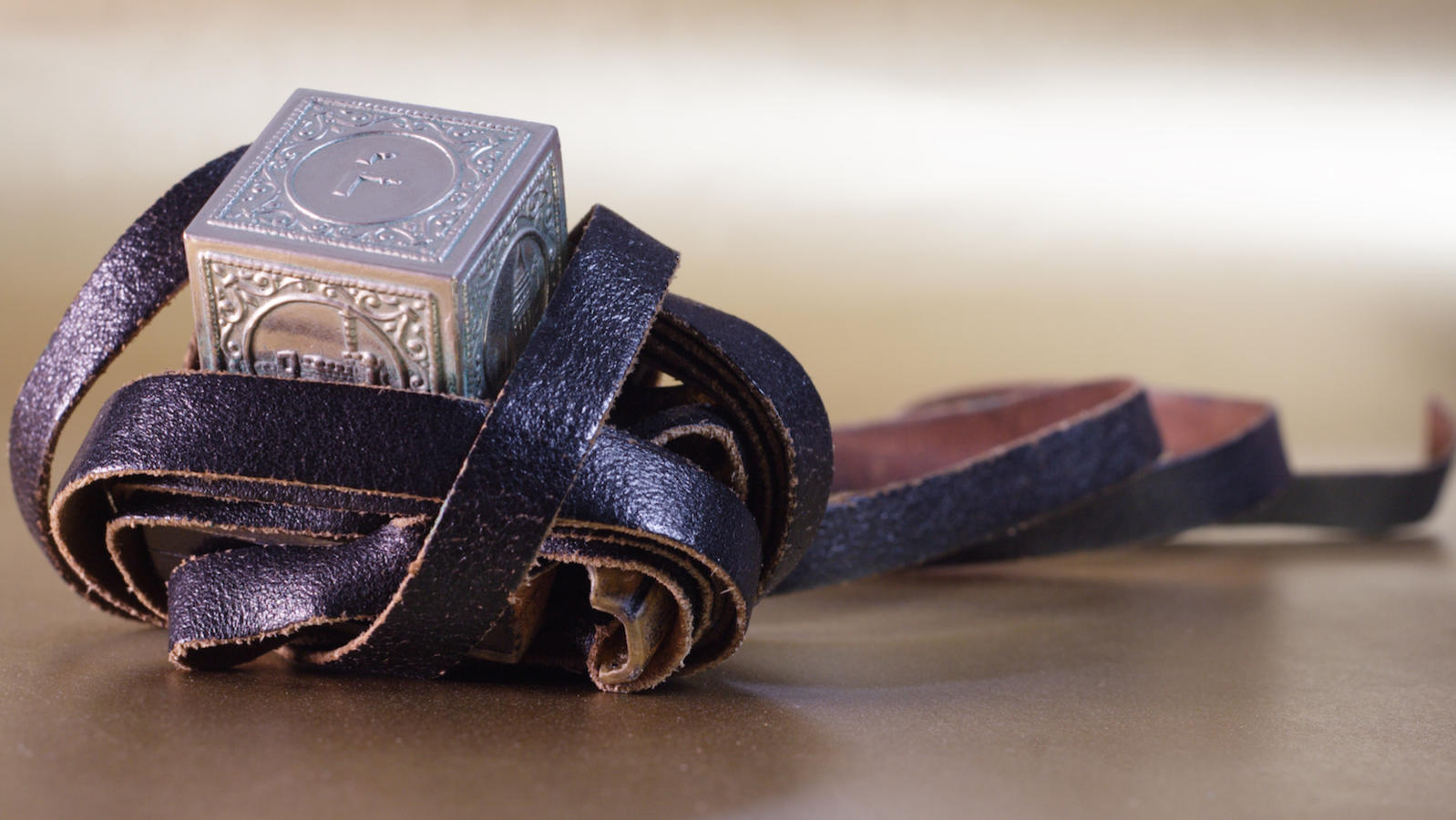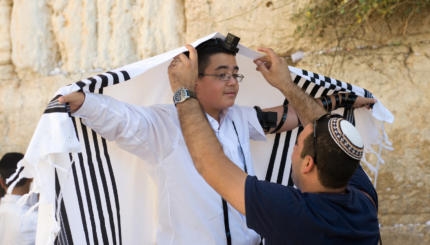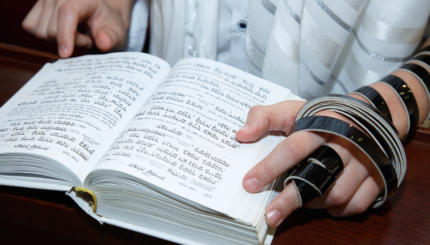The talmudic rabbis wax eloquent on the value of tefillin. The [Babylonian] Talmud (Rosh Hashanah 17a) defines a “sinner in Israel with his body” as “a skull that does not wear tefillin.”
Yet, even in the geonic period [after the canonization of the Talmud], there was a certain laxity in the observance of tefillin. Some of the geonim [leading scholars of the period] and they were followed by the Tosafot ([12th-14th century commentators] to the passage)–observed that the talmudic denunciation applies only to those who refuse to wear tefillin out of irreligious reasons, but if a man does not wear tefillin because he believes he has not attained to the purity of body and mind required for them to be worn, he is no sinner at all. It is known that Rabbi Moses of Coucy traveled through Spain and France in the year 1237 on a preaching mission in which he urged the Jews of these lands to wear tefillin, arguing that sinners require all the more this “sign” of allegiance to the divine law.
The result has been that Orthodox Jews, although they no longer wear tefillin all day, since they do not believe they have the degree of purity to do so, do wear them for prayer, and tefillin have become one of the indications of Orthodoxy. The majority of Reform Jews, however, do not wear tefillin, interpreting, as did the Karaites, the references to binding on the arm and head as purely figurative. Conservative Jews do wear tefillin, like the Orthodox.
Over the ages, the tefillin were given various symbolic interpretations. For instance, the head tefillin, the hand tefillin, and the wearing of the latter opposite the heart was all taken to suggest that head, heart, and hand must all be brought into play in the service of God. That there are four sections on the head tefillin and only one in the hand tefillin has been understood to convey the idea that opinions may differ but Jewish practice should be uniform. That the hand tefillin have to be covered with the shirt-sleeve, while the head tefillin are uncovered has been understood as suggesting that a man’s religious emotions and his benevolent deeds should be private to him and not paraded in order to demonstrate his piety and generosity. In the Kabbalah, various mystical ideas are read into the tefillin: that, for example, they represent on earth details of the Sefirot on high.
With your help, My Jewish Learning can provide endless opportunities for learning, connection and discovery.
Under the influence of the Kabbalah the following meditation appears in many prayer books for recital before putting on the tefillin:
I am now intent upon the act of putting on the tefillin, in fulfillment of the command of my Creator, who hath commanded us to lay the tefillin, as it is written in the Torah, ‘And thou shalt bind them for a sign upon thine hand, and they shall be for frontlets between thine eyes.’ Within these tefillin are placed four sections of the Torah, that declare the absolute unity of God, and remind us of the miracles and wonders which He wrought for us when He brought us forth from Egypt, even He who has power over the highest and the lowest to deal with them according to His will. He hath commanded us to lay the tefillin upon the hand as a memorial of His outstretched arm; opposite the heart, to indicate the duty of subjecting the longings and designs of our heart to His service, blessed be He; and upon the head over against the brain, thereby teaching that the mind, whose seat is in the brain, together with all senses and faculties, is to be subjected to His service, blessed be He. May the effect of the precept thus observed to be to extend to me long life with sacred influences and holy thoughts, free from every approach, even in imagination, to sin and iniquity. May the evil inclination not mislead or entice us, but may we be led to serve the Lord as it is in our hearts to do. Amen.
Reprinted with permission from The Jewish Religion: A Companion, published by Oxford University Press.
Kabbalah
Pronounced: kah-bah-LAH, sometimes kuh-BAHL-uh, Origin: Hebrew, Jewish mysticism.
Talmud
Pronounced: TALL-mud, Origin: Hebrew, the set of teachings and commentaries on the Torah that form the basis for Jewish law. Comprised of the Mishnah and the Gemara, it contains the opinions of thousands of rabbis from different periods in Jewish history.
tefillin
Pronounced: tuh-FILL-in (short i in both fill and in), Origin: Hebrew, phylacteries. These are the small boxes containing the words of the Shema that are traditionally wrapped around one's head and arm during morning prayers.



